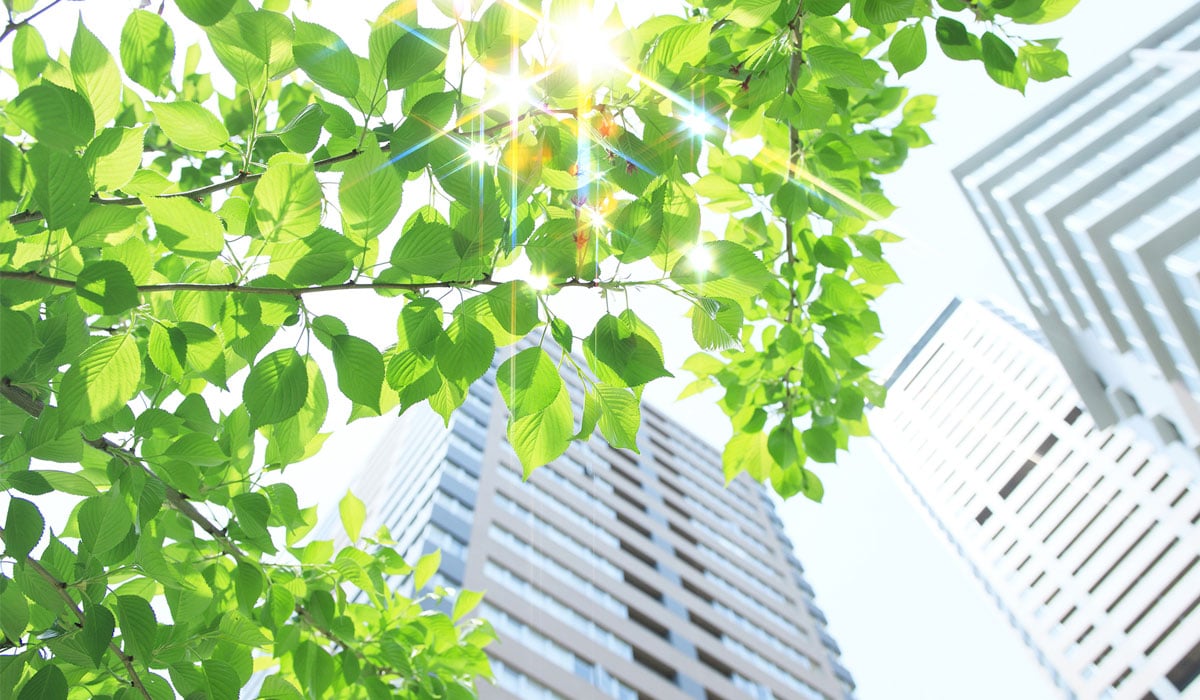With the passage of the Climate Mobilization Act by the New York City Council has come a wave of cautious optimism, as those buildings impacted by the ambitious emissions caps begin to evaluate the potential expenses such massive modifications will likely add to their operating costs.
This cutting-edge legislation is framed around the lofty goal of slashing energy usage in the five boroughs by 40% by the year 2030, a figure which has been met with opposition from real estate developers contending the associated costs of such an initiative will be too heavy a burden for the market to bear, at least initially.
Buildings to Cut Energy Costs or Face Steep Penalty
Buildings represent the largest source of greenhouse gas emissions in New York City, accounting for nearly 67% of the total, due primarily to energy used in heating, cooling, and lighting. Most tend to operate inefficiently, leaking heat in winter and cool air in summer due to the prevalence of inadequate insulation, old windows, and other aging infrastructures.
Under the auspices of Local Law 97, enacted in 2019 as part of the Climate Mobilization Act, those residential and commercial buildings measuring more than 25,000 square feet (about 50,000 structures in total) will be required to cut energy usage and carbon emissions through a variety of measures—green roof design and construction, boiler upgrades, new window installation, additional pipe insulation, and other potentially costly, custom retrofits. Buildings are also permitted to purchase renewable energy credits through the bill’s carbon trading program, which could then be applied to clean energy generated elsewhere.
Failure to comply with these regulations will result in significant fines, calculated as the difference between the emissions limit for the year and actual discharges, multiplied by $268. For skyscrapers such as the Freedom Tower and Empire State Building, these fees can potentially equate to millions of dollars per year, should they fall short of the targets outlined in the bill.
Benchmarking to Set Guidelines Going Forward
Currently, those exempt from this legislation include houses of worship, apartment buildings with rent-regulated units, and certain affordable housing complexes; a caveat many real estate executives have pointed to in claiming these exceptions place an unfair burden on those remaining buildings. Estimates put the cumulative cost to building owners in excess of $4 billion, to be recouped over subsequent years through lower operating expenses.
Others have raised concerns as to whether the new law will discourage landlords from leasing space to businesses inclined to higher levels of energy consumption, particularly those in the media, technology and life sciences industries—the theory being that their excessive energy use may push totals over the designated caps, potentially leading to fines.
While the math associated with Local Law 97 is complex, the process of benchmarking has enabled the city to accurately calculate greenhouse gas emissions per square foot for individual buildings using an established formula. Those with specific grievances who wish to appeal may do so with the newly established Office of Building Energy and Emissions Performance.
Climate Change & Social Justice: A Partnership
Though global warming has been a hot button issue for quite some time, the growing urgency of the climate crisis and the recent explosion of dedicated grassroots efforts to combat it ultimately paved the way for passage of this sweeping legislation.
Natural disasters such as Hurricane Sandy demonstrate just how vulnerable coastal cities like New York are to the consequences of climate change, placing the movement at the forefront by emphasizing the need to craft a policy that could ultimately serve as a model for other large cities to follow.
By drawing the connection to larger social justice issues—particularly the disparity in day-to-day experiences of those from lower income communities of color when it comes to dealing with certain issues, including the disproportionate danger of heat waves and growing asthma rates—advocates for environmental justice, fair housing, and labor unions were able to form alliances to overcome the opposition and push through their forward-looking agenda.
NYC to Set the Standard for Carbon Reduction
The Climate Mobilization Act is poised to be the largest carbon reduction initiative for buildings anywhere in the world, expected to vastly increase the number of green roofs, encourage renewable energy, and create thousands of jobs due to the anticipated demand to retrofit buildings with new insulation and other energy efficiency measures.
This widespread incentivization will be facilitated by eco-conscious companies like American Organic Energy and Long Island Compost, whose experts are deftly skilled at designing ecological oases and developing custom soil blends, helping to create a sustainable, energy efficient environment within the urban landscape that this legislation demands.
For further information on green roofs and how they will factor into the requirements of Local Law 97, contact American Organic Energy today.








